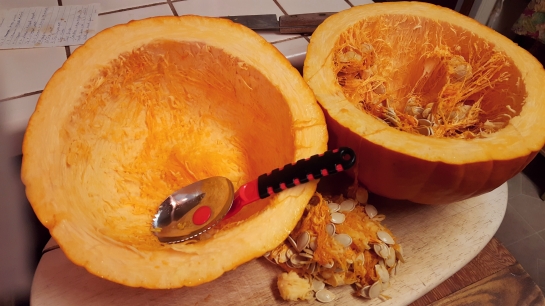 Every year, millions of pounds of pumpkin gets tossed into the garbage. It’s a massacre of epic proportions and the saddest thing of all is that it doesn’t have to happen. Don’t listen to the lies!!!
Every year, millions of pounds of pumpkin gets tossed into the garbage. It’s a massacre of epic proportions and the saddest thing of all is that it doesn’t have to happen. Don’t listen to the lies!!!
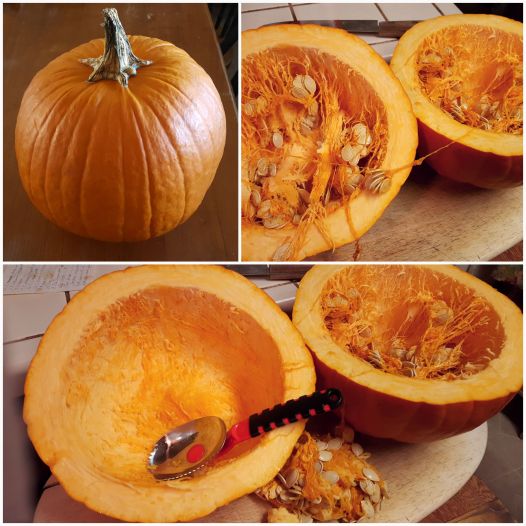 (All links open a new page, so you won’t lose your spot when you look around! Get information on gardening and cultural traditions, recipes, stories, and more!)
(All links open a new page, so you won’t lose your spot when you look around! Get information on gardening and cultural traditions, recipes, stories, and more!)
You’ve heard them before. “You can’t cook with that kind of pumpkin.” “That pumpkin will be too watery.” “That kind of pumpkin has no flavor.” “That kind of pumpkin is too stringy.” Etc. etc. etc. The reality is that (most of) it is not true! The pumpkin I’m referring to, of course, is the one many of us get for making Jack-o-lanterns out of. It’s also known as the Connecticut Field Pumpkin.
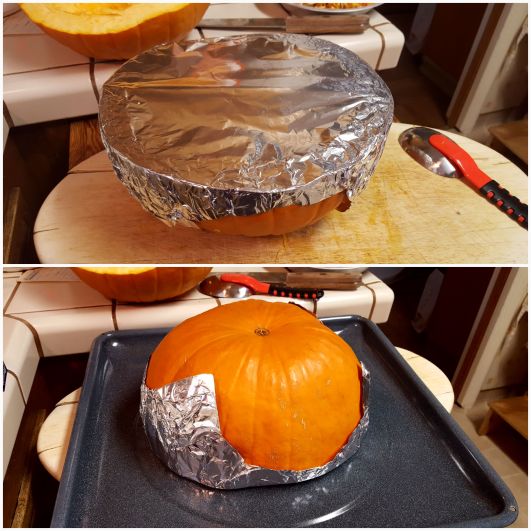 I started using these pumpkins before anyone told me I wasn’t supposed to, and I’m really glad. I would have missed out on a lot of really tasty soups and baked goods if I had listened.
I started using these pumpkins before anyone told me I wasn’t supposed to, and I’m really glad. I would have missed out on a lot of really tasty soups and baked goods if I had listened.
Here’s another little lie for you: canned pumpkin is usually not entirely pumpkin anyway. Many companies that sell canned pumpkin for baking have added other types of winter squash in an effort to keep up with America’s ever growing sweet tooth and aversion of anything that looks natural. That’s why things made with canned pumpkin often have an overly orange color and tend to be sickeningly sweet.
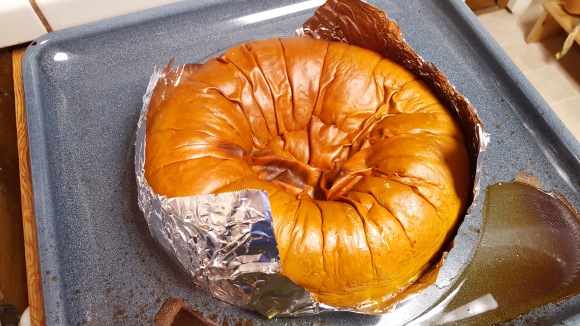 Now, there are some things to be aware of when using the Connecticut Field Pumpkin versus one of the other types that are more typical for cooking. The field pumpkins do have a higher moisture content, which is not a problem at all for making soups. In fact they are better for soup because they have a more savory flavor than the baking pumpkins. I really want pumpkin soup, not liquid pumpkin pie, thank you very much. So this means that you will need to strain the pumpkin after roasting it to reduce the moisture content if you use if for baking (it’s easy, trust me).
Now, there are some things to be aware of when using the Connecticut Field Pumpkin versus one of the other types that are more typical for cooking. The field pumpkins do have a higher moisture content, which is not a problem at all for making soups. In fact they are better for soup because they have a more savory flavor than the baking pumpkins. I really want pumpkin soup, not liquid pumpkin pie, thank you very much. So this means that you will need to strain the pumpkin after roasting it to reduce the moisture content if you use if for baking (it’s easy, trust me).
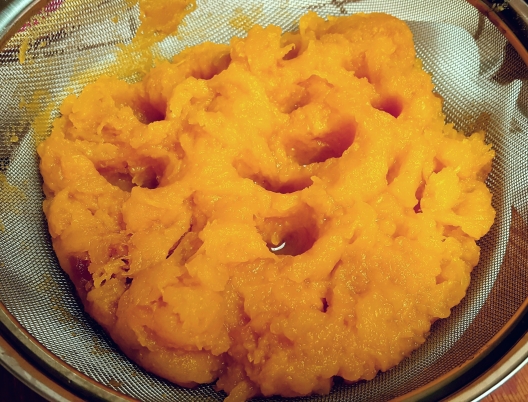 The other thing is that the flavor is milder than baking varieties. I don’t mind because I know how to concentrate that flavor and then I can actually taste the spices I add to my baked goods and modify the sweetness better. Again, it’s easy! The excuse that these pumpkins are too stringy is the most ridiculous of all. Duh! You’re supposed to puree them anyway after you bake them so that gets taken care of!!
The other thing is that the flavor is milder than baking varieties. I don’t mind because I know how to concentrate that flavor and then I can actually taste the spices I add to my baked goods and modify the sweetness better. Again, it’s easy! The excuse that these pumpkins are too stringy is the most ridiculous of all. Duh! You’re supposed to puree them anyway after you bake them so that gets taken care of!!
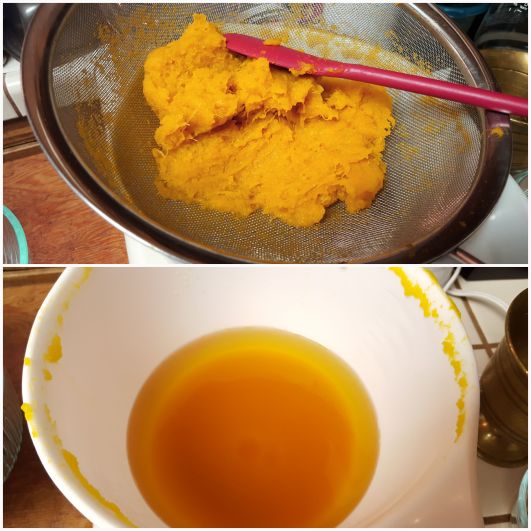
So, now you can stop the slaughter and the waste. The only pumpkins you can’t save are the ones you actually carved into already. Especially here where it is warm, as they get gross really fast. I like to buy some extras to keep for cooking, and just think, they are pretty cheap, too!
Baked Pumpkin Recipe
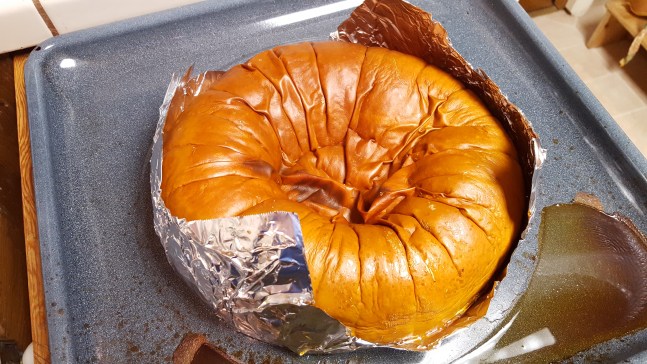
Directions
Preheat your oven to 400° F. You may need to remove all but one rack, and place the rack on the lowest shelf.If you decorated the outside if the pumpkin with things like paint or glitter, you will need to scrub it off, or even peel the skin off with a vegetabe peeler, before baking.
Cut your pumpkin in half along its equator, then scoop out the seeds. The seeds can be roasted or saved for your garden. Cover the openings with foil, and any peeled areas, then place foil side down in a shallow roasting pan. This will help trap the juices from the pumpkin, and make it easier to clean up afterwards. You’re welcome. If your pumpkin is too large to fit both halves at the same time, just roast them one at a time.
Bake in the oven for at least an hour. You should be able to pierce the side of the pumpkin easily with a fork and the sides should yield to pressure. Thicker pumpkins will likely take longer, perhaps 30 minutes more.
Once done, remove the pumpkin from the oven and allow to cool until it can be comfortably handled. The pumpkin will likely cave in as it cools, this is fine. Peel the skin away from the flesh. The skin can be composted! Place the remaining flesh and any liquids you were able to capture into a blender and puree until smooth. You could also use an immersion blender for this. Avoid any flesh or juices that were burned as they will give a bitter flavor that you won’t want.
The best way to store pureed pumpkin is in the freezer. Pumpkin does not can very well at home because of its very low acid content. This puree is perfect to use, as is, for soup recipes. However, you will need to reduce some of the liquid if you want to make baked goods like pies and bread. You have two options: straining or concentrating.
To strain the puree, place it in a fine mesh sieve over a bowl. Allow the liquid to drain for a while. Commercial canned pumpkin will weigh just over 8 ounces per cup, so that will help you know when enough liquid has been drained, or even if you need to add a little of the juice back in. The drained liquid can be used for making a very tasty rice, or added to vegetable soups for extra flavor. You can freeze it until you are ready to use it.
The other option of concentrating just involves putting the puree in a wide pan and cooking it further on very low heat. You will want to use a paddle type of spatula to move the pumpkin around in the pan to keep it from scorching. Cook it down until it reaches the weight mentioned above. If you find you’ve cooked it down too much, you can always add in a little water.
Whatever method you use, don’t get too worried about being exact. You just want enough moisture out to get close to that of canned pumpkin, since so many recipes assume that’s what you’re using. Happy baking!


Heck! I use the Jack O’ lantern type of pumpkins after Halloween. They are bland, but not bad. The white ones really are sort of bad, but there are so many good ones that I do not mind chucking the white ones. We also grow ‘Sugar Pie’ in the garden as one of our standard winter squash. But I prefer to make pumpkin pie with the jack O’ lanterns. It bothers me to simply waste them. I can not use all the pumpkins from the neighborhood, but I can more than I can use in a year.
LikeLiked by 1 person
I actually prefer the flavor from the field pumpkins for pie simply because they have a more mellow flavor that lets the spices shine through. I get a lot of compliments on my pie, so I guess I’m not the only one! The pies you can buy are just too sweet and it actually kind of sticks in my throat. I’ll be posting a few recipes using pumpkin including a soup recipe, so maybe you can use up all that pumpkin!
LikeLiked by 1 person
Oh, I do not make the soup. Others make too much of that already.
LikeLike
Just wait till you see the recipe. Mine’s a little different than the usual pumpkin-pie-in-a-bowl. Not one speck of cinnamon or nutmeg! 😉
LikeLiked by 1 person
I like pumpkin too much to make soup with it. I just eat it that way because others make soup.
LikeLiked by 1 person